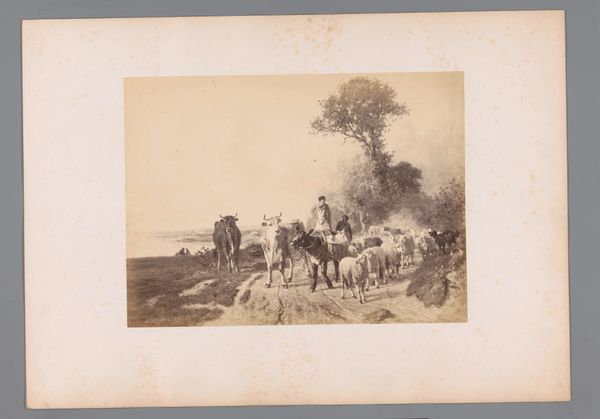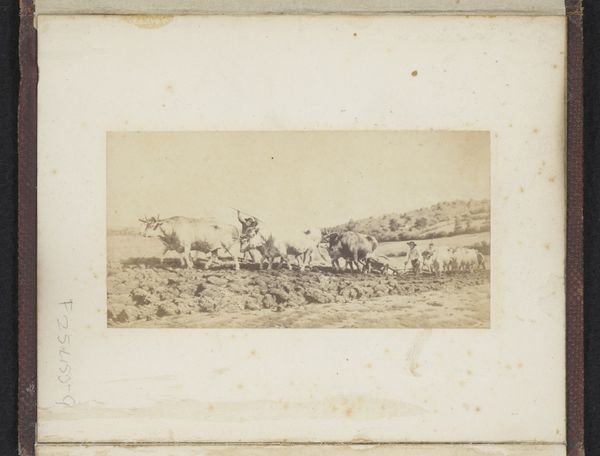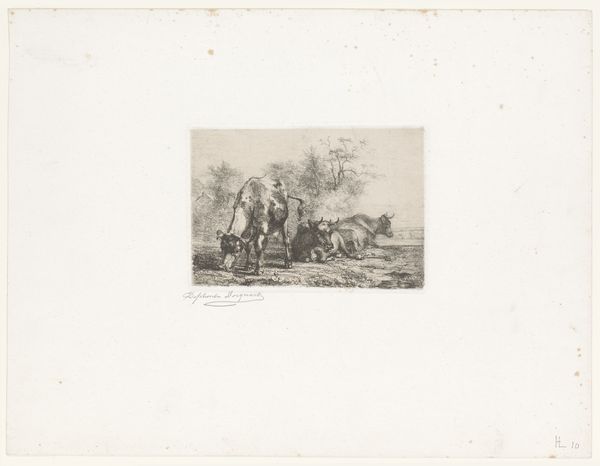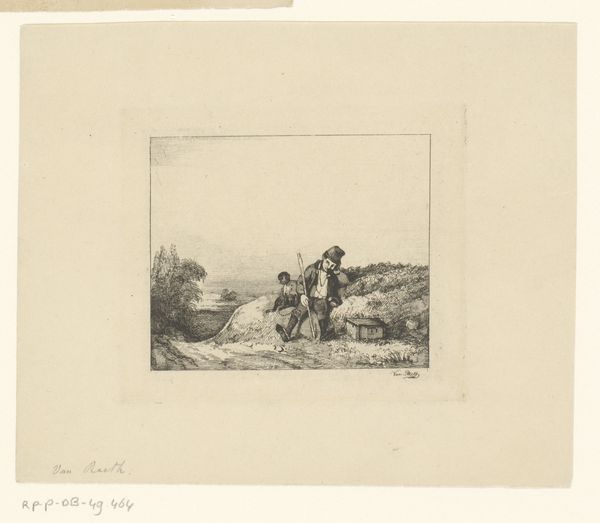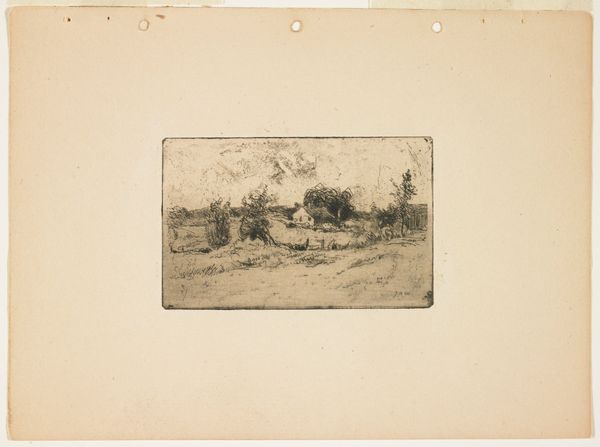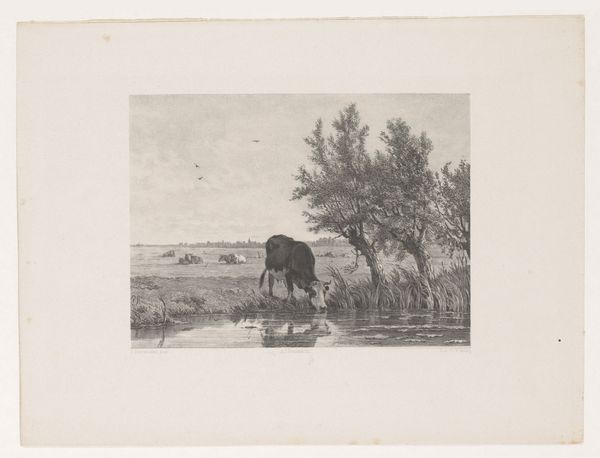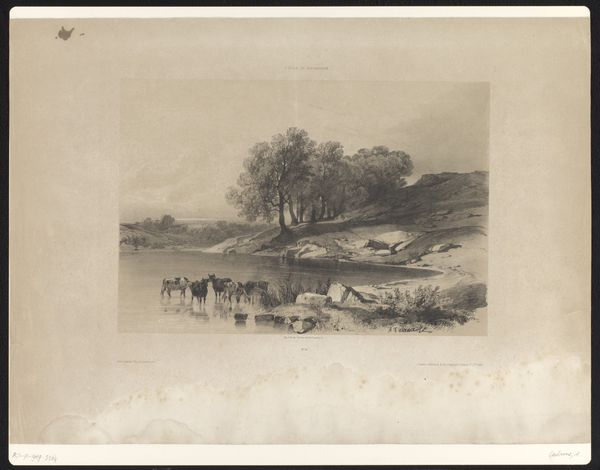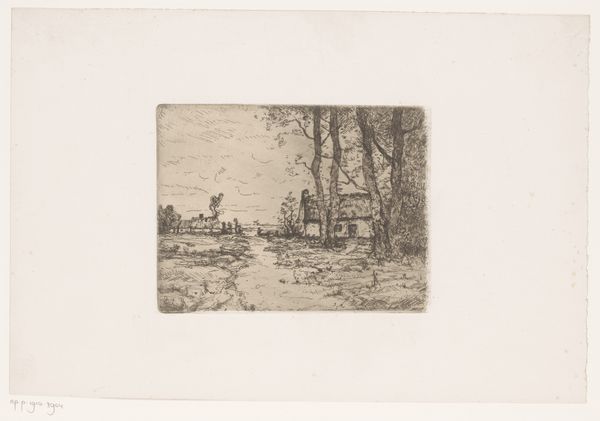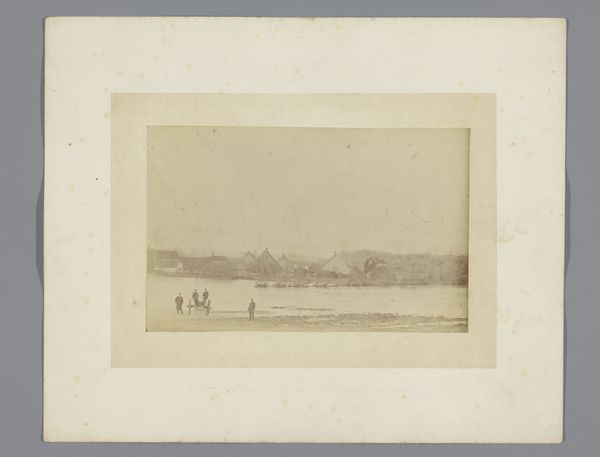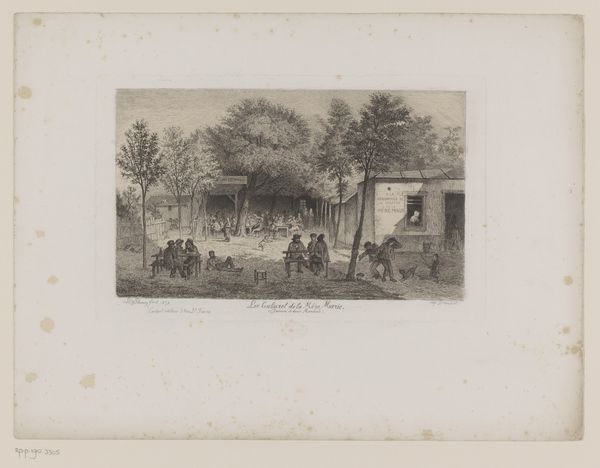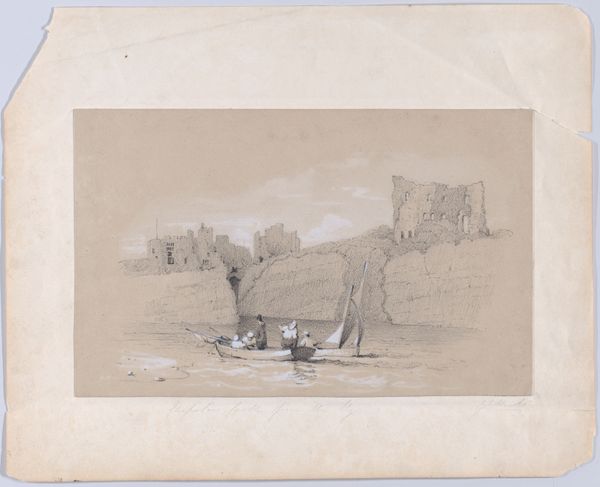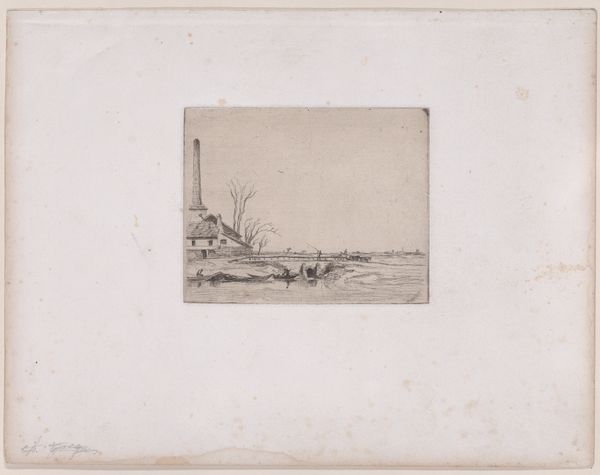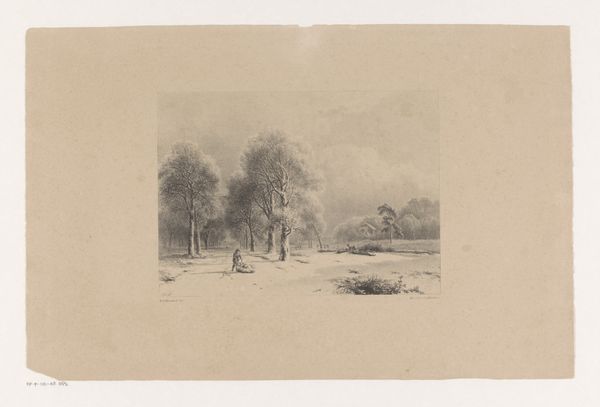
Fotoreproductie van een schilderij van Rosa Bonheur van runderen in een landschap c. 1890 - 1910
0:00
0:00
photography, gelatin-silver-print
#
landscape
#
photography
#
coloured pencil
#
gelatin-silver-print
#
realism
Dimensions: height 93 mm, width 50 mm
Copyright: Rijks Museum: Open Domain
Curator: Let's spend some time with this intriguing photograph, "Fotoreproductie van een schilderij van Rosa Bonheur van runderen in een landschap," dating from around 1890 to 1910. It appears to be a gelatin silver print. Editor: My initial impression is one of serene pastoral life. The muted tones give it a nostalgic feel, and the composition, with the cattle reflected in the water, is quite calming. Curator: The fascinating thing about Rosa Bonheur is her dedicated portrayal of animals in a time where female artists often focused on more conventional subjects. Considering the era, her choice reflects a conscious resistance against prevailing societal expectations, carving out space for female ambition in naturalism. Editor: I see that too, the cows clustered together near a watering hole, could almost be a symbol of community. Perhaps this recalls the primal importance of nature for nourishment but also survival as it touches upon our symbiotic relationship with these creatures. What do you think? Curator: Absolutely, there is a distinct inter-species element to her work that’s quite prescient given modern considerations about animal rights and intersectionality. We need to consider that such ideas were nascent, making Bonheur’s sympathetic portrayals even more compelling and culturally important. She captured this bucolic moment not to simply represent a pretty scene but, also to highlight the significance of agriculture. Editor: The almost dream-like quality of the gelatin-silver print process actually enhances this. It creates an impression of timelessness – like it’s plucked directly from memory or archetypal story. It speaks of origins and reliance upon natural sources which is further expressed by the earth tone palette used. Curator: Agreed. And if we see this in light of Victorian England's burgeoning industrialization, there's definitely something radical in celebrating agrarian life. Editor: Rosa Bonheur continues to be of vital import when questioning representation, environmentalism and progress through the language of historical paintings. Curator: Well said. It is exciting to find the social commentary present in such a deceptively serene and pastoral work.
Comments
No comments
Be the first to comment and join the conversation on the ultimate creative platform.
